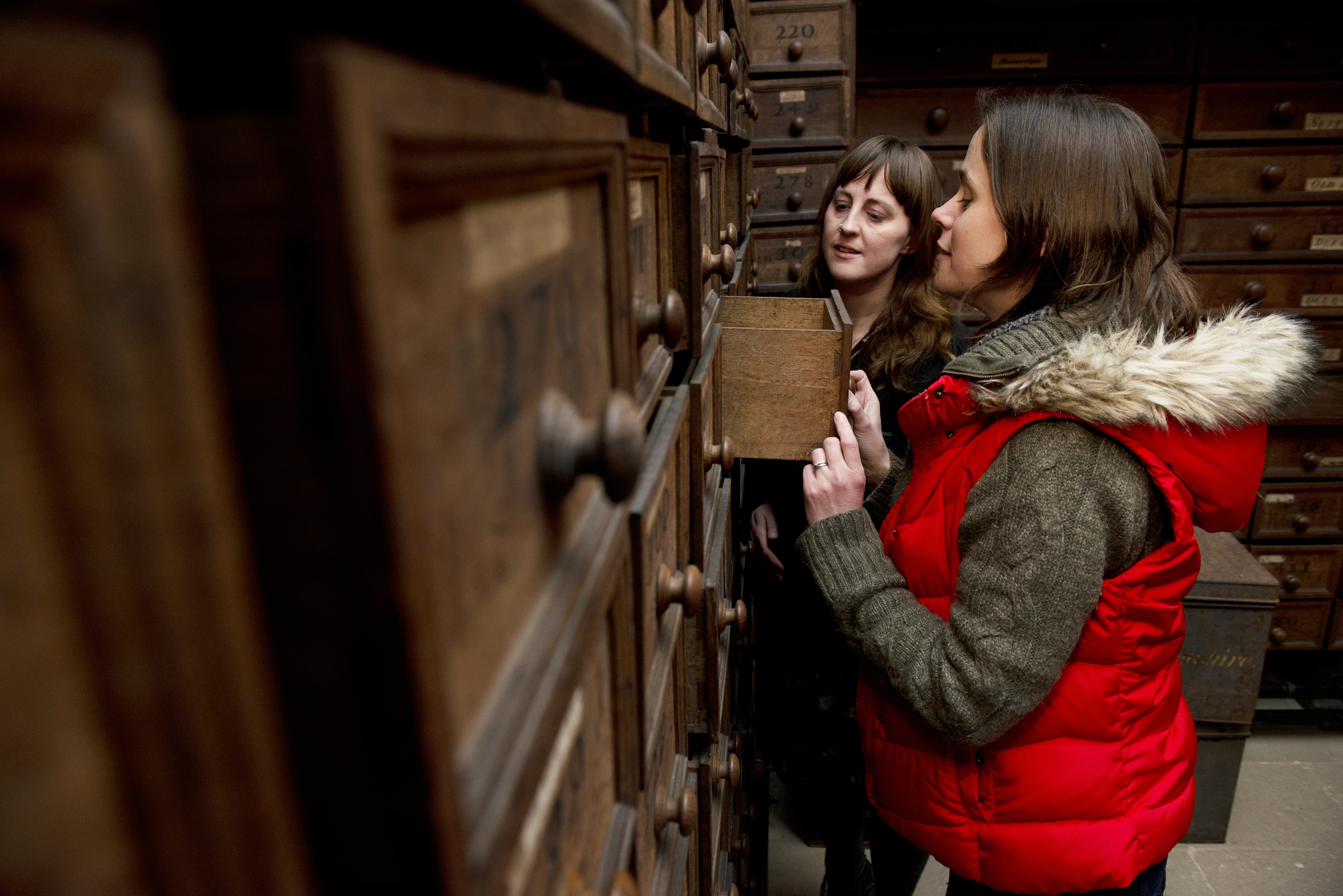A new partnership will connect cutting-edge Oxford University research with the National Trust’s inspiring places and collections.
Marking the first investment of this kind by the National Trust in a university, the partnership will create new opportunities for interdisciplinary research, knowledge exchange, public engagement and training between the two organisations.
The venture has grown out of the Trusted Source Knowledge Transfer Partnership, which ran from 2016-18 and was funded by the National Trust, the Arts and Humanities Research Council, and InnovateUK.
Trusted Source provided a means to bring academic research into the National Trust’s interpretation, drawing on experts to create materials that enhance visitor engagement with the properties, landscapes and collections in the charity’s care, supporting its ambition to move, teach and inspire its visitors and supporters. Trusted Source resulted in new online content for the Trust’s website and interpretation at pilot properties.
Now the expanded partnership will support new research, knowledge exchange and training through a range of workstreams at both organisations, including academic research placements and consultancy, conferences, workshops, lectures and events, and student opportunities.
The new partnership will be funded by the National Trust for an initial period of three years. It will be based in Oxford’s Humanities Division and is intended to be interdisciplinary, building partnerships across the University’s academic Divisions.
Professor Karen O’Brien, Head of Oxford’s Humanities Division, said: ‘The University of Oxford is delighted to establish this innovative partnership with the National Trust. This flagship collaboration will create exciting opportunities for interdisciplinary research, knowledge exchange and public engagement with the National Trust’s inspiring places, collections, staff and visitors.’
Hilary McGrady, Director-General of the National Trust, said: ‘The National Trust and Oxford University have a strong history of collaboration. This new partnership will create even more opportunities for bringing cutting-edge academic research into the stories we tell about the places and collections in our care.’
Created through a partnership between the National Trust and the University of Oxford, Trusted Source is a collection of short and easily understood articles about history, culture and the natural environment. Written by Oxford academics and National Trust experts, these articles explore all manner of subjects related to the special places and collections in the National Trust's care, from 'Who was Virginia Woolf?' to 'What are sunken lanes?'.
What is a pilgrimage?
Image credit: National Trust/Claire Reeves A 16th-century stained glass panel with the figure of a pilgrim at Packwood House.
A 16th-century stained glass panel with the figure of a pilgrim at Packwood House.
A pilgrimage is a devotional practice consisting of a prolonged journey, often undertaken on foot or on horseback, toward a specific destination of significance. It is an inherently transient experience, removing the participant from his or her home environment and identity. The means or motivations in undertaking a pilgrimage might vary, but the act, however performed, blends the physical and the spiritual into a unified experience.
Origins
The origins of pilgrimage are difficult to determine, but deliberately visiting powerful sites is a practice that predates antiquity. Pilgrimages have long been a common feature of many world religions, including Christianity, Judaism, Islam, Buddhism, Hinduism, and Shinto.
Motivation
A believer might undertake a pilgrimage in fulfilment of a vow, as atonement for sins, as a gesture of thanks for positive events, or as a means of intercession, among other reasons. Prior to the age of exploration in Europe, pilgrimage was a primary impetus for travel, especially among non-elites, and played a significant role in local economies and the transmission of culture.
Christian pilgrims
In the Christian pilgrimage tradition, the practice revolves around visiting either sites significant in the Bible — particularly those concerning the life of Christ — or in the lives of saints, or paying reverence to holy relics.
The three main destinations of Christian pilgrimage are Jerusalem, Rome, and Santiago de Compostela, and for most pilgrims throughout history reaching these sites was a prolonged and possibly dangerous endeavour. However, smaller and more local pilgrimage sites — such as Canterbury Cathedral in England or the Holy House of Loreto in Italy — also enjoyed great popularity.
Although the 12th century is largely considered to have been the golden age of Christian pilgrimage, it remained a devotional practice throughout the following centuries.
Pilgrimage persists
Evidence of pilgrimages throughout history still surrounds us, if one knows where and how to look. In art, pilgrims are often recognisable by their attributes: staff, cloak, large-brimmed hat, small satchel (a 'scrip'), flask, worn boots, and the scallop shell. Many museum collections also include the types of small, personal items that a pilgrim would have brought back from his or her journey, such as badges, or flasks (called 'ampullae') filled with holy water or oil.
Pilgrimages still enjoy great popularity today, although the definition of what constitutes an ‘authentic’ pilgrim is debated. The modern pilgrimage, while still a strictly religious exercise for many, has also been embraced as a more fluidly spiritual experience, open to all participants, regardless of their beliefs.
